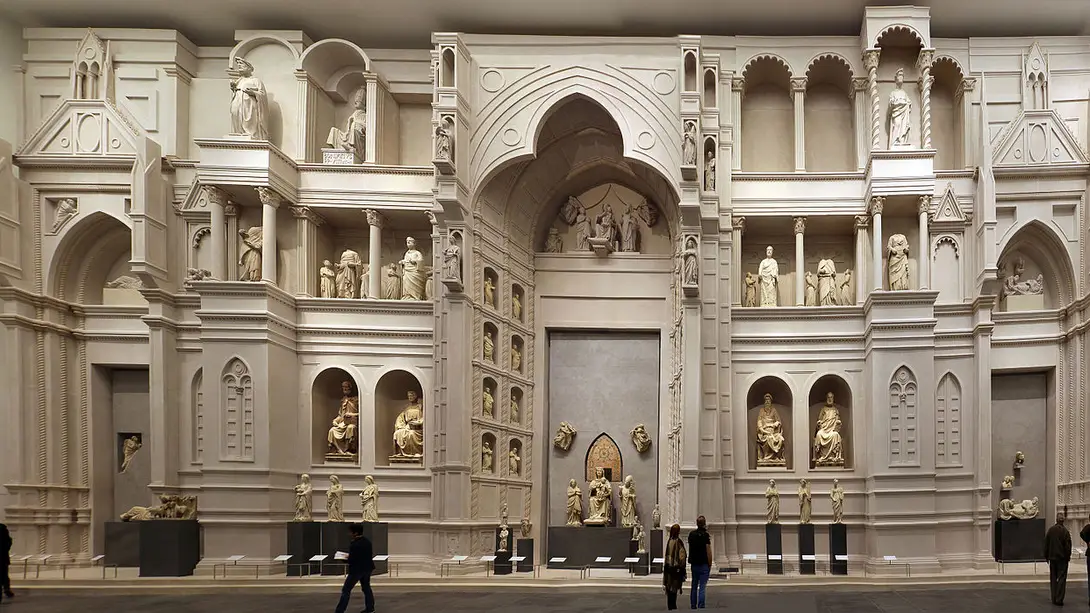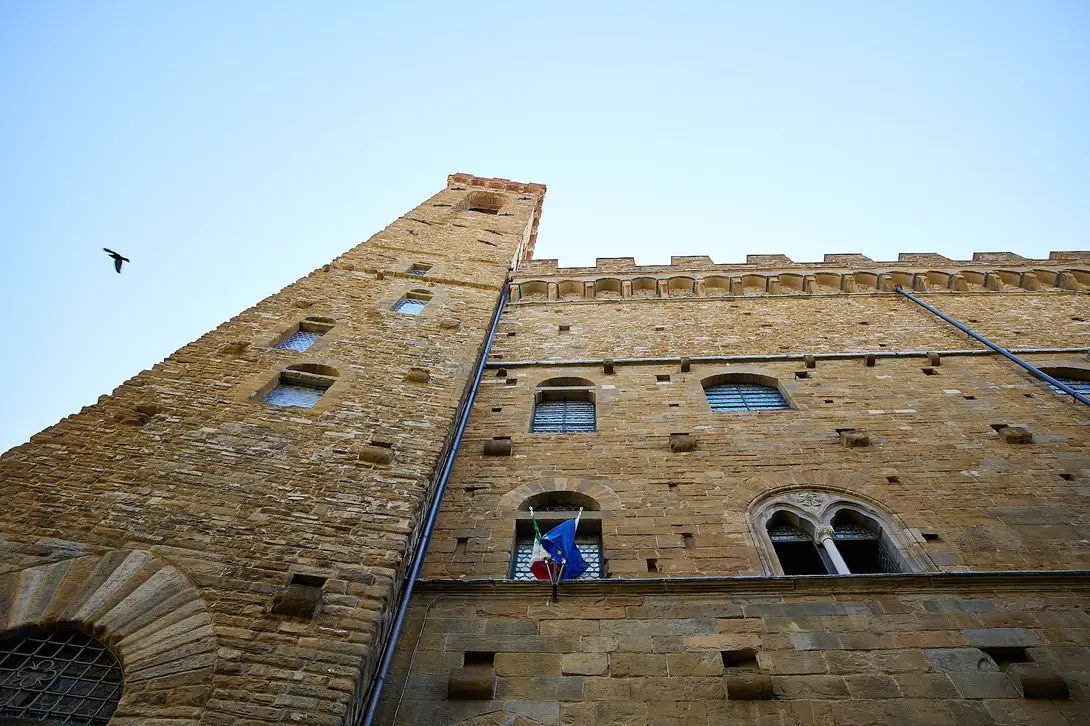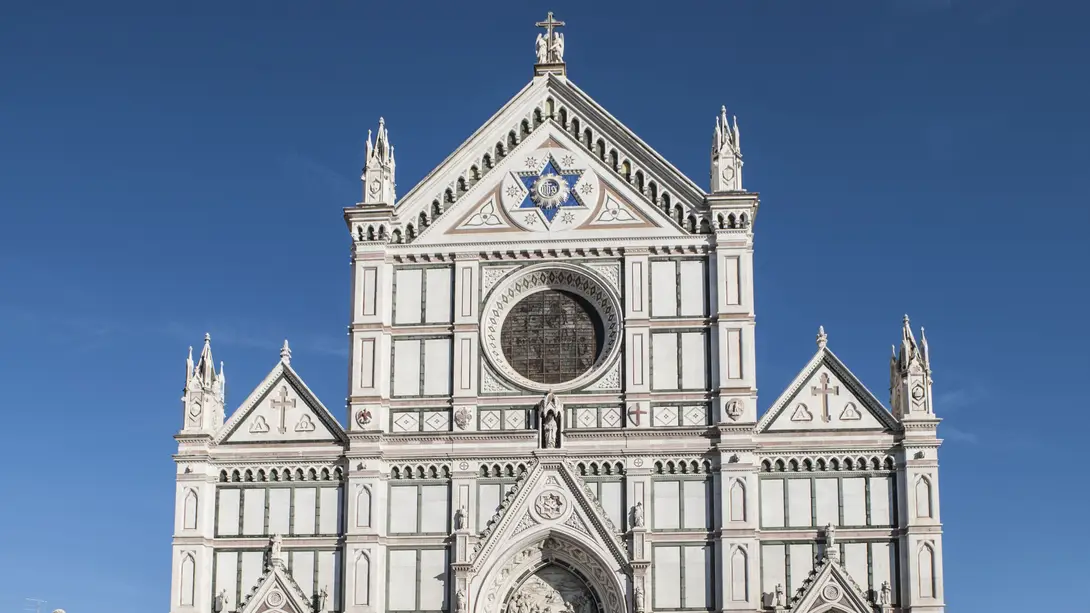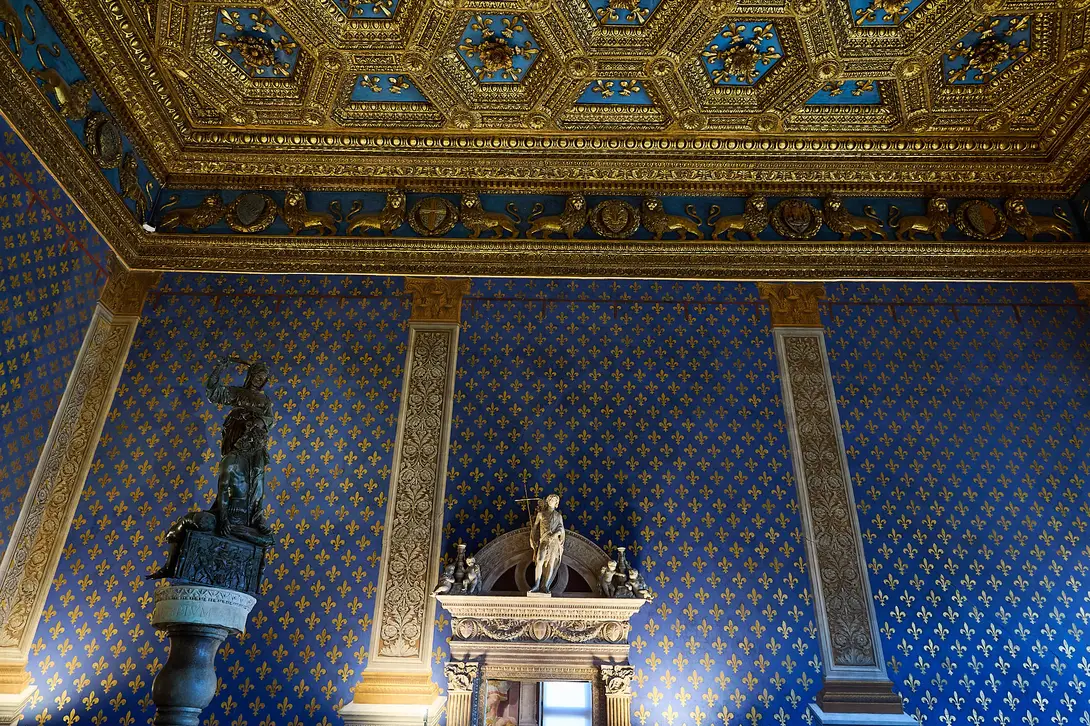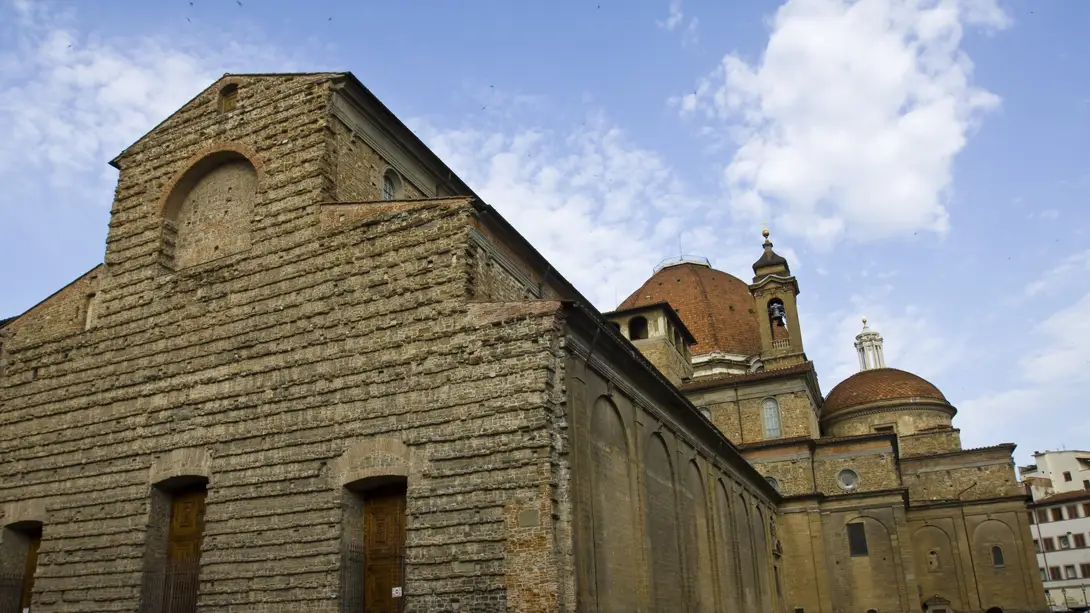
Donatello in Florence
Donatello can be considered one of the greatest sculptors of all time. He was a master of all sculptural techniques (he worked with marble, terracotta, bronze, wood, and stucco), an inventor of new realistic prototypes, as well as a reviewer of ancient art. He could instill life in his creations and humanity in his subjects. In the first half of the 15th century, the Florentine sculptor, together with Masaccio (who excelled in painting) and his friend Filippo Brunelleschi (who immortalized himself thanks to his monumental architectural skills), became one of the protagonists of the Italian Renaissance in Florence. They wrote a new fundamental page in the history of the art of the western world. Michelangelo, whose master Bertoldo used to be Donatello’s pupil, was among his most fervent admirers.
Although Donatello’s works can be found in many Italian cities (Padova, Siena, Prato), undoubtedly the biggest part of his creations can be admired in Florence, where he was born and then died (1386-1466), and where he lived most of his life.
Here’s an itinerary to discover his Florentine artistic legacy.
Young Donatello started his career in the years between the end of the 14th century (late-gothic) and the beginning of the 15th (Proto-Renaissance). After studying ancient art in Rome for two years with Brunelleschi, the sculptor started an intense activity on the construction site of Duomo.
In Museo dell’Opera del Duomo, the first step of our ideal tour, we can admire: John the Apostle, the first revolutionary artwork by Donatello, realized for the ancient façade. The numerous sculptures he made for the belltower, like the Prophets, adhering to the classical statuary; a mature work, the cantoria. This was decorated with a joyful parade of dancing putti, and the Penitent Magdalen, an unbelievably modern wooden sculpture, dating to 1457 when the artist was already in his seventies.
Even his marble statue of David was sculpted for the Duomo. It's currently located, like many more of Donatello’s artworks at Museo del Bargello. The beautiful Saint George, together with the bas-relief at its feet, depicting the saint slaying the dragon, was realized for one of Orsanmichele church’s tabernacles (replaced by a copy). This was Saint George, a prototype of the Renaissance hero, standing tall and proud. This can be considered a precursor of Michelangelo’s David. A true masterpiece that can also be admired in Museo del Bargello is Donatello’s bronze David, the first freestanding nude bronze statue made since antiquity. This was also the first artwork commissioned by the Medici family. The biblical hero is represented at a very young age, nude, wielding a sword and a rock, standing victorious with his foot on Goliath’s head. In the same room of the museum, stands the Marzocco, the lion supporting a shield with the lily of Florence depicted on the front, considered a symbol of the city. It was initially intended as a decoration for the papal apartments in Santa Maria Novella, but it later took its regal place in front of Palazzo Vecchio (replaced by a copy).
At Museo Stefano Bardini, where the famous antiquarian exhibited his many treasures between the 19th and 20th centuries, there are two representations of the Virgin Mary with Child made by Donatello. One is the polychromatic “Madonna dei cordai”, named after the Guild of Cordai, the rope makers, who commissioned it. The other, the “Madonna della Mela” is made of terracotta and represents the Virgin offering an apple to baby Jesus, in a symbolic and maternal gesture.
Inside Santa Croce church we find two artworks by Donatello: in the right nave, framed by a classic-style aedicula, there's a representation of the Annunciazione, realized in pietra serena, that shows the Virgin looking at the kneeling Angel with an expression of surprise and reverence of rare beauty. The other masterpiece by Donatello is a wooden Crucifix, located in the left transept, that, for its extreme realism, as defined by Brunelleschi “Cristo contadino” (farmer). The museum itinerary continues in the “cenacolo”, the refectory of the convent, where we can also admire a statue in gilded bronze representing San Ludovico of Tolosa, whose original destination was one of Orsanmichele’s tabernacles.
In the Sala dei Gigli (Hall of Lilies) of Palazzo Vecchio, we can admire one of the last artworks made by Donatello, the bronze sculpture depicting Judith and Holofernes. The biblical heroin is frozen in the act of raising her sword, just a moment before the beheading of Holofernes, conferring an intense dramatic force to this masterpiece. It was originally located in Palazzo Medici via Larga (Palazzo Medici Riccardi) but was later confiscated and moved to Palazzo Vecchio at the time of the Florentine Republic (1495).
Another important church, San Lorenzo, holds many treasures made by Donatello: the Sagrestia Vecchia, conceived by Brunelleschi as the first mausoleum of the Medici family. The ceiling is decorated by eight polychromatic bas-relief stuccos depicting the four evangelists and four scenes of John the Apostle’s life. The sculptor created them on the occasion of the famous Ecumenical Council of 1439. For the church, Donatello also created the two bronze doors (of the Apostles and the Martyrs) and the two pulpits, situated between the central and the side naves. The artist, aided by his collaborators, decorated with scenes of the Ascension and the Resurrection, in the last years of his life.
Further proof of Donatello’s fame is represented by the location of his burial place: the crypt of San Lorenzo Church, just a few steps far from Cosimo the Elder’s tomb.
“Either the spirit of Donato works in Buonarroto (Michelangelo), or that of Buonarotto began by working in Donato.” That’s what Giorgio Vasari wrote in his book, “Lives of the Artists”, at the end of the chapter he dedicated to Donato de’ Bardi, called Donatello.
Comune di Firenze
The places
Stages
Museo dell'Opera del Duomo
The Museo dell'Opera del Duomo houses, for conservation reasons, a whole series of works of art from the Santa Maria del Fiore complex (Cathedral, Baptistery and Bell Tower). A complete refurbishment, inaugurated in 2015, has enhanced the extraordinary collection documenting the history of Florentine sculpture during the building of the Duomo, starting with Arnolfo di Cambio's amazing reconstruction of the ancient façade.
The museum houses some fundamental works of Italian art, such as the Cantorie (choirs' tribunes) by Donatello and Luca della Robbia, which are among the most significant moments of 15th-century sculpture. Other iconic sculptures include Donatello's Penitent Magdalene, a wooden figure of strong realism from the mid 15th century, and Michelangelo's intense ‘Bandini’ Pietà, a masterpiece of the great artist's maturity.
One section is entirely dedicated to the doors of the Baptistery, where the panels of the Gates of Paradise by Lorenzo Ghiberti stand out.
There are also various wooden models of the dome and a series of tools documenting the work of the workers at the time of Brunelleschi's building site. Belonging to the Cathedral Treasury is the Altar of St. John, a masterpiece of 15th-century Florentine goldsmithing, made for the Baptistery.
Bargello National Museum
The Bargello National Museum is a place of extraordinary interest. The evocative medieval building houses a unique collection of Italian sculpture, mainly from the Renaissance period (masterpieces by Donatello, Michelangelo, Verrocchio, Della Robbia), but also from the Mannerist and Baroque periods.
The fascinating Medieval building was built starting in 1255 as the Palazzo del Capitano del Popolo; during the Medici era it became the seat of the Bargello (Chief of the guards who presided over public order) and was later turned into a prison. In the 19th century, following a philological restoration, the palazzo was turned into a museum: the first national museum of the unified state.
On the ground floor, next to the splendid courtyard, is the 16th century hall with a series of sculptures by Michelangelo (Bacchus, Tondo Pitti, Brutus and David-Apollo) and works by Sansovino, Giambologna and Cellini. The 13th-century hall on the first floor houses masterpieces by Donatello, including the David and St George, and sculptors from the early Florentine Renaissance (Luca della Robbia and Desiderio da Settignano); the two versions (by Ghiberti and Brunelleschi) of the Sacrifice of Isaac, made for the competition (1401) for the second door of the Baptistery, are also on display here. On the second floor are Tuscan sculptures from the second half of the 15th century, including Verrocchio's famous Lady with the Mazzolino, as well as works by Rossellino, Pollaiolo and others. A small Baroque masterpiece is the bust of Costanza Bonarelli by Gian Lorenzo Bernini.
The Giottesque fresco cycle in the Cappella del Podestà features one of the oldest portraits of Dante Alighieri. The museum's collections include an important collection (‘Carrand Collection’) of Gothic and Renaissance minor art (ivories, gold, ceramics, weapons, bronzes and medals), as well as a complete panorama of Italian majolica from the 15th century onwards. Also noteworthy are the rooms dedicated to the glazed terracottas of the Della Robbia family and the new Islamic Gallery, recently reorganized with the Majolica Room.
Stefano Bardini Museum
The museum is named after its creator, the famous antiquarian Stefano Bardini. The old building that houses it, transformed with the neo-romantic taste of the time (around 1880), became the show-room of the ‘Prince of Antiquaries’.
This fascinating museum, off the beaten track, holds a collection of over 3600 works, including paintings, sculptures, armour, musical instruments, ceramics, coins, medals and antique furniture. Among the most important works are Tino di Camaino's Charity, Benedetto da Maiano's Madonna and Child with St. John the Baptist, Antonio del Pollaiolo's St. Michael the Archangel, Donatello's Madonna of the Ropes, and Guercino's Atlas.
Two rooms on the ground floor have been dedicated to Florence and its history, with some emblematic works from various places in the city: Pietro Tacca's very popular Boar (the bronze statue at the Mercato del Porcellino, "Piggy's market", is a copy), Giambologna's Diavolino from the crossroads between Via dei Vecchietti and Via Strozzi, and the gilded Marzocco from the architrave of Palazzo Vecchio.
The display denotes the eclectic taste of the owner; a characteristic detail is the painting of many walls in the typical blue, ‘blu Bardini’, used to highlight individual pieces, and imitated in many European courts. Also not to be missed, a stone's throw from the museum and still linked to the same figure, is the Bardini Villa & Garden.
Basilica di Santa Croce
Designed by Arnolfo di Cambio (1296), it is the largest Franciscan church in the world; it is also known as the "Pantheon of Italian glories" for its illustrious tombs (Michelangelo, Galileo, Machiavelli, Rossini, Foscolo, Alfieri) that it preserves in the suggestive Gothic interior.
Among the more than 200 tombs, the two Renaissance monuments stand out, masterpieces of Rossellino and Desiderio da Settignano.
Of the numerous chapels in the transept, frescoed in the fourteenth century, authentic masterpieces are the Bardi and Peruzzi chapels, frescoed by Giotto; remarkable are also the works of Donatello (the Annunciation and the Crucifix). The famous Crucifix of Cimabue damaged by the 1966 flood, instead, is displayed in the sacristy. The museum itinerary includes the Cappella dei Pazzi, by Brunelleschi, the two cloisters and the Last Supper, frescoed by Taddeo Gaddi, a treasure chest of numerous works of art (Donatello, Orcagna, Domenico Veneziano).
Palazzo Vecchio - Monumental Rooms
Palazzo Vecchio is the city's symbolic monument and, for over seven centuries, the seat of its government; it bears extraordinary testimony to all the salient phases of Florence's history and art. It overlooks, with its imposing bulk, Piazza della Signoria.
The Monumental Quarters form the heart of the museum itinerary and include a series of rooms, starting with the grand Salone dei Cinquecento (with a decoration that celebrates Florence, and in particular the Medici dynasty following the advent of Grand Duke Cosimo I), overlooked by the precious Studiolo di Francesco I.
A little further on is the Sala dei Duecento. On the upper floors one can admire: the Sala dei Gigli, the Sala dell'Udienza, as well as the so-called Quartieri Medicei (Eleonora di Toledo's Quarters and the Quartiere degli Elementi). Also of interest is the Sala del mappamondo (or the Sala del Guardaroba), with ancient geographical maps, and the Cancelleria, which was the office of Niccolò Machiavelli during the first Florentine Republic.
The decorations of the various rooms were made between the 15th and 16th centuries by important artists, including Ghirlandaio, Bronzino, Vasari and his assistans.
Along the museum itinerary are some masterpieces of Renaissance sculpture: Michelangelo's Genius of Victory (Salone dei Cinquecento), Donatello's bronze group of Judith and Holofernes in the Sala dei Gigli, Verrocchio's Puttino (the one in Michelozzo's courtyard, the main entrance to the Palazzo, is a copy).
Another museum tour of Palazzo Vecchio include the Arnolfo Tower, with breathtaking views from the top.
All children who come to Florence should be taken to Palazzo Vecchio. The Mus.e Association organises daily activities for families with children of different age groups, from 4 years upwards, by reservation only. For a fun visit on your own, it is possible to rent a Family Kit (recommended for children from 6 years of age) with a map and other useful items for a visit to the Palazzo or the historical centre under the banner of knowledge, wonder and sharing.
Basilica di San Lorenzo
One of the most important Florentine Renaissance building bound up with the history of the Medici family. The basilica consacreted by Saint Ambrose in 393 and rebuilt in a Romanesque form in the 11th century, was enlarged in 1418 by Filippo Brunelleschi to a commission by Giovanni dei Medici. The church is one of the finest expressions of Renaissance architecture and art.
